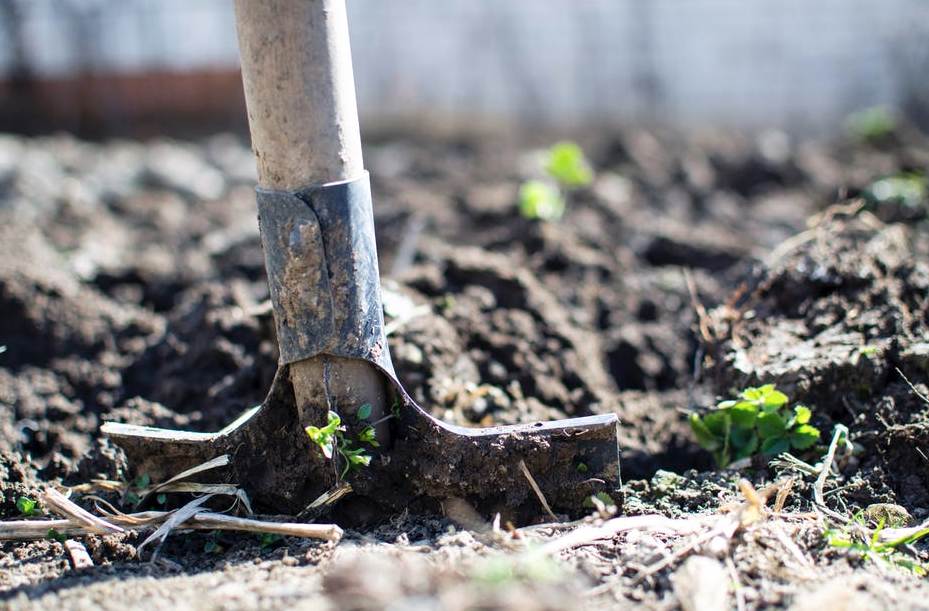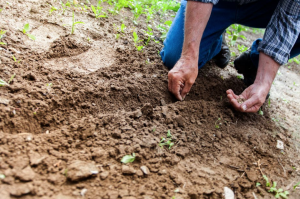
A garden at your home can bring many health benefits, that could be from simple fruits and vegetables to fresh herbs, not to mention the ongoing fitness training you are getting from doing physical activity in your garden. Here are the steps in creating a healthy garden for your home.
1. Have an Idea. Is it likely to become a vegetable garden? An herb garden? A flower garden? In the event you decide to increase flowers, do you really need annuals, which you have to replant annually but that give shade the majority of the summertime? You may blend any of the aforementioned, after all, it is your backyard. The main advice is to start small and go from there.
2. Decide on a place. Virtually all vegetables and many blossoms need about half an hour of full sun every day. Spend a day in your selected place and observe the way the sun moves across the area. It may get more sunlight than you think. But do not despair if your lot is mainly sunless; lots of plants bear colour. Assess plant labels or ask the staff at the neighbourhood garden centre to learn how much sunlight a plant needs.
Choose a place where your plants cannot be ignored, for example, close to the door, next to the mailbox or in direct line with a window. Don’t forget to assess the situation in your yard, you may need to do some tree pruning on already existing trees or even consider a tree removal if your yard is obstructed by too many trees.
3. Clear up the ground. Eliminate this sod covering the region you intend to plant. If you’d like fast results, you are able to dig it out, however, it is simpler to smother it with paper. A coating of five sheets is generally thick; double that if your yard is Bermuda-grass or St. Augustine grass. Distribute a 3-inch layer of compost on the paper and wait patiently. It is going to take about four weeks for the paper and compost to decompose.
 4. Enhance the soil. Invariably, soil requires a boost. The remedy is straightforward: organic enhancers. Add a small layer of mulch, old leaves, dried grass or manure as a soil booster depending on your soil needs. To find out more about your soil, have a soil test done by means of your county cooperative extension office. You will get a detailed report on exactly what your soil lacks and can use that to improve soil conditions.
4. Enhance the soil. Invariably, soil requires a boost. The remedy is straightforward: organic enhancers. Add a small layer of mulch, old leaves, dried grass or manure as a soil booster depending on your soil needs. To find out more about your soil, have a soil test done by means of your county cooperative extension office. You will get a detailed report on exactly what your soil lacks and can use that to improve soil conditions.
5. Dig or do not. Digging loosens the soil so that roots can penetrate more readily. But digging once the soil is moist or too dry may ruin its own structure. Dig only when the soil is moist enough to make a loose ball on your fist but sturdy enough to fall apart once you discard it. Use a spade or spading fork to gently twist the top 8 to 12 inches of dirt, mixing in the organic matter from Step 4. In vegetable beds and gardens of annual flowers, turn the dirt just once annually in the spring until you plant.
6. Select your own plants. Some individuals browse through catalogues for weeks; a few people today visit the garden store and purchase them. Both ways work, as long as you select plants that are adapted to your climate, soil conditions and sunlight available in your location.
7. Plant them in the soil. Some crops, like pansies and ginseng, like the chilly weather, so that you may plant them in fall or winter. Tomatoes and other seasonal flowers don’t do so well around the colder months so wait until frost has passed. Mid-spring and mid-autumn are great times to start planting your garden. Some plants such as lettuce and sunflowers are super simple to grow from seed and just sow them into the soil with little work.
Make certain to read the seed package for advice about when to plant, how deep to plant, and also just how far apart to plant the seeds. If you are an adventurous newcomer, you can find a head start on the growing period by sowing seeds inside before the final frost. Ensure you follow the instructions provided on the seed packaging and put seed containers in a sunny place. Make sure you keep the seeds and seedlings moist but not wet (or else they can rot).
A simpler method is to purchase young plants, known as place crops. Just dig a pit and then bury them.
8. Water. Seedlings shouldn’t dry, so water every day while they’re modest. Taper off since the plants get bigger. Baby seedlings need regular watering every other day until the roots start coming through. Depending on your soil and humidity, watering needs may vary. Plants are begging for water whenever they wilt somewhat in the heat of the afternoon. Water deeply and slowly, so the water soaks in rather than running off.
9. Mulch. To keep weeds out and water in, cover the dirt with two or three inche
s of compost. All kinds of mulch can be found, from pine needles to cocoa hulls to bark chips. For a vegetable garden of seasonal flowers, choose a mulch which decomposes quickly, typically in a couple of months.
10. Keep this up. Your backyard is on its way. Keep up the watering on a regular basis and make it apart of your daily health routine. It can be really refreshing and clearing for your mental health to just work in your garden. You and your garden will be looking healthy in no time, all the training outdoors you are doing will really benefit your fitness and well-being.
Make sure you stop and smell the fruits of your hard work!
